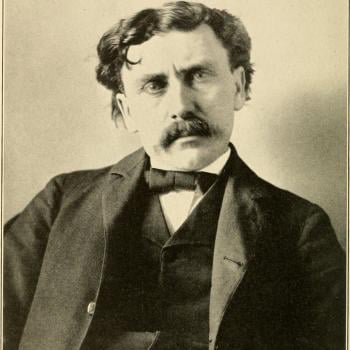I have been thinking recently about parallels between the Reformation and the rise of contemporary Global Christianity.
Next week, I am involved in a conference being held at Gordon College (November 14-16), on Protestantism? Reflections in Advance of the 500th Anniversary of the Protestant Reformation, 1517-2017. My paper bears the title “What hath Wittenberg to do with Lagos? Sixteenth-Century Protestantism and ‘Global South’ Christianity.”
Separately, I have also been working on Christianity in Ethiopia, where the past forty years or so have witnessed a religious transformation somewhat reminiscent of “the” Reformation. An ancient and highly traditional church, highly clerical and liturgical in nature, has been challenged profoundly by the rise of new Protestant and Pentecostal groups inspired by modern Bible translations, and putting Christian thought in the vernacular. Fifty years ago, Ethiopia had perhaps 250,000 Protestants: today, there are seventeen million, 18 percent of the population, and that number is rising fast. Ethiopia has 68 times as many Protestants in 2013 as there were half a century ago. Now that’s church growth.
Obviously, I am not trying to draw slavishly exact parallels, as the different eras are utterly different in their cultural and political settings, still less their intellectual approaches. But it is instructive to think of the original movement in terms of physical scale.
When we look at late medieval Europe, we naturally recognize the many different communities that would be affected by the Reformation, and the continent’s extreme diversity. North Germany was not Bavaria, and the northern and southern Netherlands were very different worlds. Europe was a federation of multiple discrete cultures and regimes, with many subtle gradations in their attitudes.
But it’s easy to forget the tiny scale of these worlds. Today, if you draw a circle with just a 300 mile radius centered on Munich, you include fragments of at least a dozen countries and political units. In 1520, the same circle would have encompassed literally hundreds of princedoms, baronies, prince-bishoprics and free cities. Obviously, communications in that era were much slower than they are today, but that should still remind us of the very small arena in which Europe conducted its religious debates. Of course, scholars moved easily between cities, courts and universities: they really did not have far to travel.
Now think of this in a contemporary context. In terms of modern states, Ethiopia today covers about 420,000 square miles, equivalent to the combined territories of Germany, France, the Low Countries, and Switzerland. Put another way, the countries at the heart of the European Reformation covered roughly the same land area as Ethiopia – which is only the eighth largest nation on the African continent.
Modern Nigeria covers a territory roughly equal to Germany and France combined.
Even more startling is the numerical size of the populations we are dealing with. By modern standards, the world in 1520 (say) was very sparsely populated. A reasonable guesstimate would give a global population of some 450 million, of whom just 80 to 90 million lived in Europe. Europe’s largest country was France, with just 20 million people, about the same as the modern-day state of Florida – or the Nigerian city of Lagos.
It’s not surprising that people could have such wide networks of acquaintance and interaction in that era. These were, by our standards, small worlds, and the actual numerical size of the literate elites was tiny – what, four or five percent of the total population?
Returning to contemporary Global South comparisons, the whole of Europe in 1520 had a population rather smaller than that of contemporary Ethiopia (93 million) and far less than Nigeria (168 million).
In other ways too, contemporary Ethiopia looks surprisingly like Reformation-era Europe. If Luther or Zwingli visited a modern-day European congregation, they would be astonished at its advanced age, and the scarcity of children. In Germany today, only 23 percent of people are under twenty-four years old, and the median age is 45. In Ethiopia, 64 percent are under twenty-four, and the median age is 17.5. Naturally, teens and young adults are much more likely to respond to a fiery new religious message than are graybeards, making that huge demographic contrast more than a curious factoid.
I make no grand claims about new interpretation of the Reformation, but I think these issues of scale are worth remembering as a basis for studying the era.
They also remind us of the critical role of demography in shaping religious trends and movements. That is a topic eminently worthy of several books in their own right. Studying the sixteenth century Reformation without paying serious attention to demography is like ignoring the movement’s theological dimensions.
I also wonder how the rate of Protestant growth in sixteenth century Europe compared to that in modern-day Ethiopia or Nigeria?












